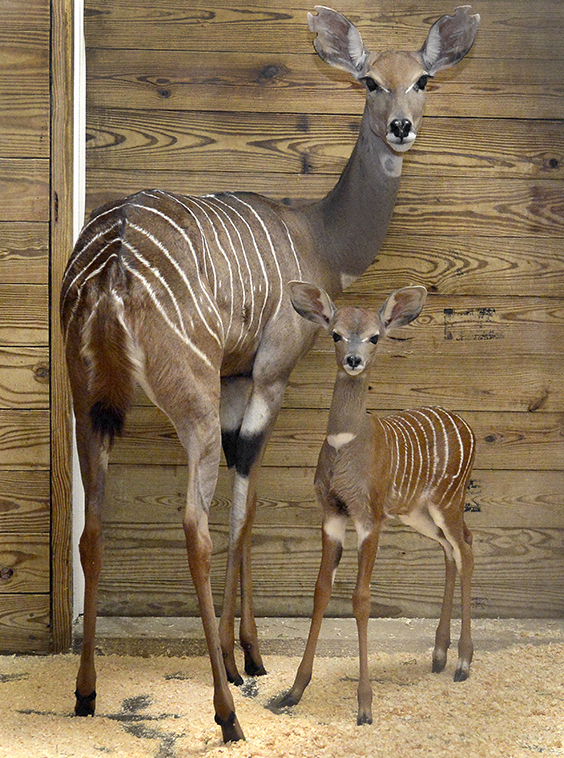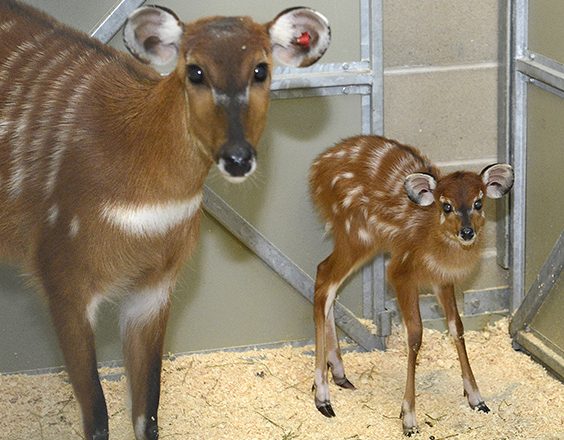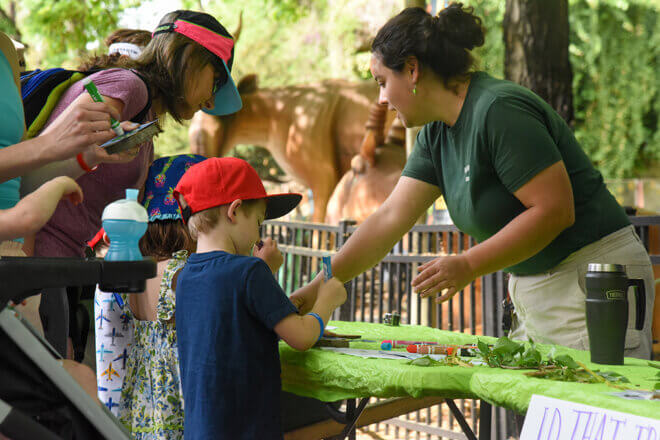The Maryland Zoo in Baltimore is welcoming its newest babies, two female sitatunga calves born on December 7 and Christmas Day, 2015. These are the third and fourth sitatunga calves born this year at the Zoo, joining males Riri and Carl, born in April and June respectively. The Zoo also welcomed a male lesser kudu, born on Friday, December 18, 2015 the first lesser kudu to be born at the Zoo!
The first female sitatunga calf was born to two -year-old Remy and has been named Jess by zoo keepers. She weighs about 21 pounds currently. The second female calf, named Noel, weighed almost 15 pounds at her last health check. Her mother is two-year-old Mousse and both calves were sired by eight-year-old Lou.
“Both calves are healthy and are being well cared for by their mothers inside the warmth of the African Barn,” stated Carey Ricciardone, mammal collection and conservation manager at the Zoo. “As a first time dam, Mousse is very protective of Noel, but Remy is a much more relaxed mother.” Both calves will remain behind the scenes in the barn until the weather turns warm.

The male lesser kudu calf, Kaiser, was born to two-year-old Meringue and sired by five-year-old Ritter. “This little guy has long, spindly legs and huge ears right now; he’s adorable,” continued Ricciardone. “Meringue is taking great care of him and we are pleased with his progress so far.” Kaiser stands about three-feet-tall and weighs in at 26 pounds. He will also remain off exhibit with his mother until spring. We are really excited to have a kudu calf born here for the first time at the Zoo.”
Lesser kudu (Tragelaphus imberbis australis) are one of eight species of African spiral-horned antelope. Male lesser kudu horns can grow to be 72 inches long, with 2 ½ twists. In the wild they live in dry, densely thicketed scrub and woodlands of northern east Africa. Interestingly, they rarely drink water, apparently getting enough liquid from the plants that they eat. At the Zoo, the lesser kudu can be found in the African Watering Hole exhibit along with addra gazelle and saddle-billed storks.
The sitatunga (Tragelaphus spekii) is a species of antelope native to Central Africa. They live in semi-aquatic swamps, marshes and flood plains. Outside of protected areas, sitatunga are vulnerable to over-hunting and habitat loss, as people drain and develop swamp land. Currently, however, sitatunga are not classified as threatened or endangered. The Maryland Zoo’s sitatunga herd is made up of twelve animals, including the new calves, and can be found in two exhibit spaces along the boardwalk in the African Journey section of the Zoo.
All three of the calves’ births are the result of a recommendation from the Species Survival Plan (SSP) for each species, coordinated by the Association of Zoos and Aquariums (AZA). SSPs provide breeding recommendations to maximize genetic diversity, with the goal of ensuring the long-term survival of the captive population and the health of individual animals.






Share this article